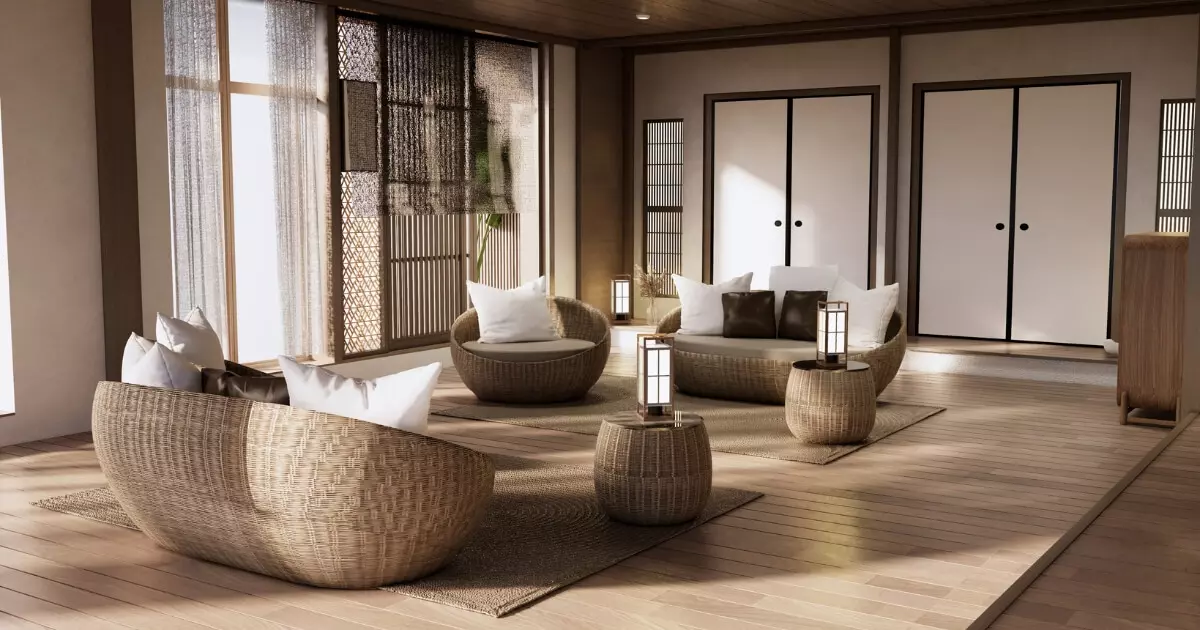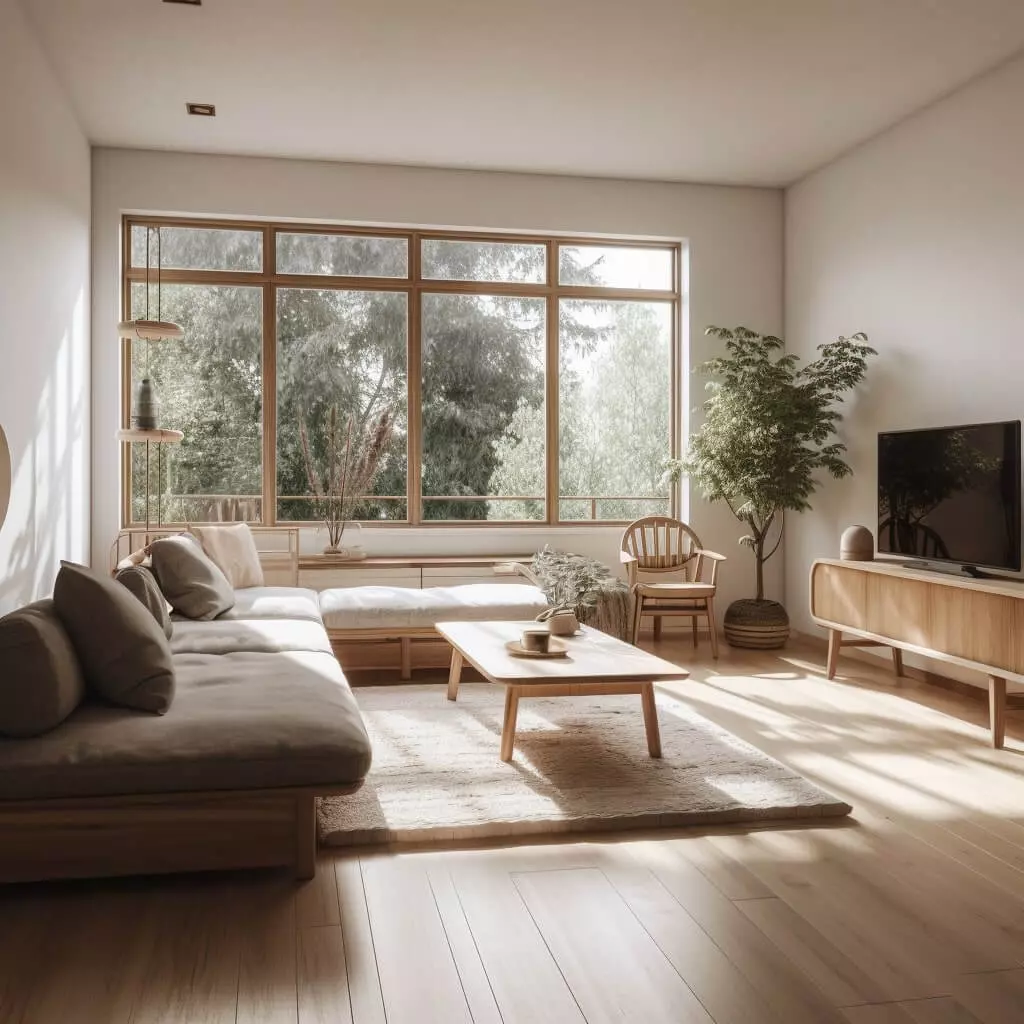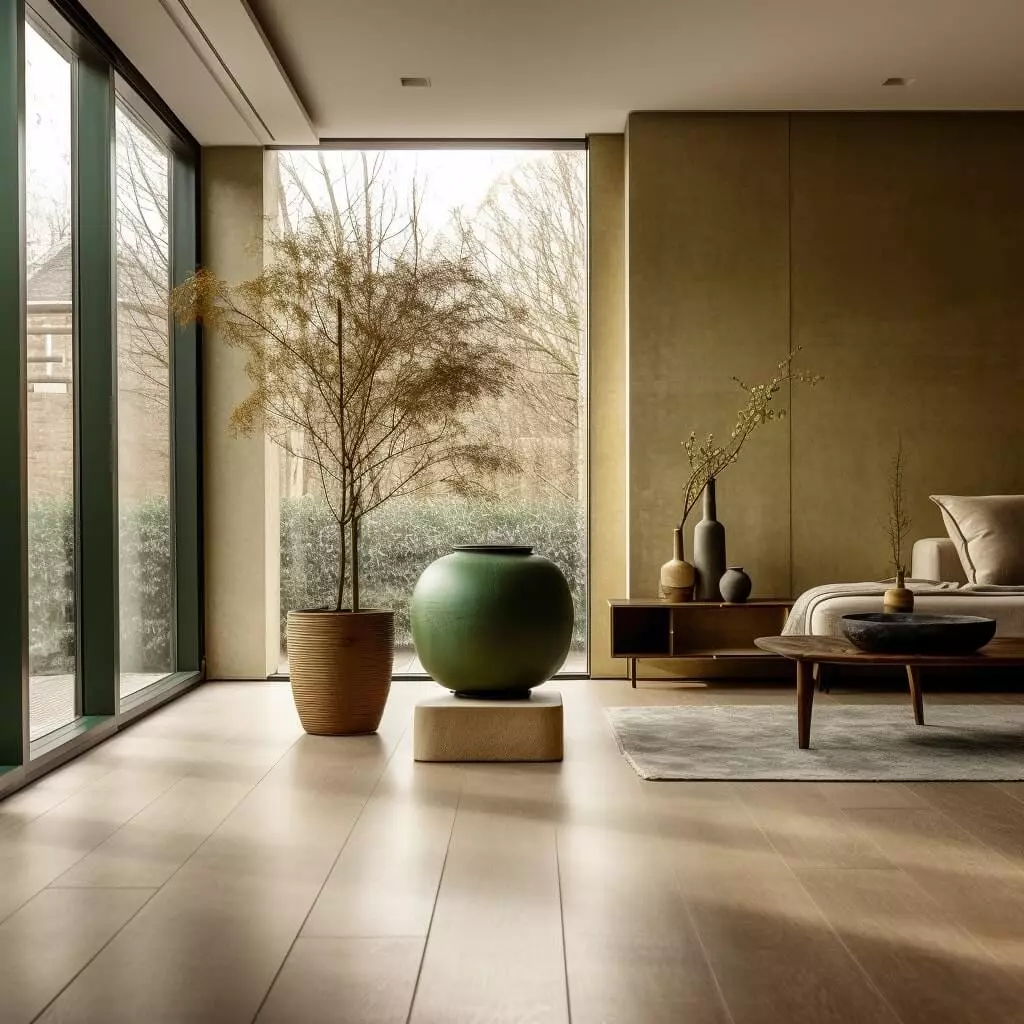In today's fast-paced world, finding serenity and tranquility at home has become a top priority. That's where Japandi design comes in. By combining the simplicity and sophistication of Japanese aesthetics with the coziness and practicality of Scandinavian design, Japandi creates a harmonious and balanced living space.
The Key Features of Japandi Design
Minimalism and Simplicity
At the heart of Japandi design lies a strong emphasis on minimalism and simplicity. Clean lines, uncluttered spaces, and well-curated furnishings create a soothing atmosphere that invites relaxation and tranquility.
Natural Materials
Both Japanese and Scandinavian styles prioritize sustainable and eco-friendly materials like wood, bamboo, rattan, and stone. These natural elements not only add warmth and texture to a room but also create a connection to nature that is key to Japanese design.
Muted Color Palette
Japandi color palettes revolve around soft, neutral shades such as whites, grays, and beiges, paired with subtle pops of earthy tones like greens, blues, and browns. This understated approach to color allows the beauty of the natural materials and design to take center stage.
Functionality and Practicality
Japandi design is highly functional and practical. It incorporates Scandinavian influence by emphasizing spaces that are designed to cater to the needs of daily life. Clever storage solutions and multi-purpose furniture make the most of every square inch, creating a practical and clutter-free environment.
Wabi-sabi and Hygge
Wabi-sabi, the Japanese art of embracing imperfections, and hygge, the Danish concept of creating a cozy atmosphere, add depth and character to Japandi interiors. Celebrating life's simple pleasures and accepting imperfection create an authentic and homely feeling.
Japanese and Scandinavian Design Principles
Japandi design draws inspiration from Japanese principles such as kanso (simplicity), shibui (subtle beauty), ma (negative space), and wabi-sabi (embracing imperfection), as well as Scandinavian principles like lagom (balance), hygge (coziness), and sustainability. These principles contribute to the overall aesthetic and philosophy of Japandi design.
 Image source: saigonintela.vn
Image source: saigonintela.vn
The Influence of Japanese and Scandinavian Design
Japandi design is the result of a shared appreciation for simplicity, craftsmanship, and a connection to nature found in both Japanese and Scandinavian design cultures. While each style is unique, they share many common elements, such as the use of natural materials, a preference for neutral color palettes, and warm and functional spaces.
The growing popularity of Japandi design can be attributed to our collective desire for a more mindful and intentional way of living. It perfectly embodies elegance, functionality, and sustainability. Japandi entered the mainstream in 2020, capturing the interest of people spending more time at home. It is also sometimes referred to as Scandinese design.
Japandi Interior Design in the Home
Japandi design can be applied to various areas of the home, creating a harmonious and serene living environment:
Living Rooms
In Japandi-style living rooms, opt for low-profile furniture, clean lines, and a neutral color palette. Create a cozy and inviting space by using soft textiles, warm lighting, and practical storage solutions.
Bedrooms
A Japandi bedroom is a sanctuary of calm. Choose a simplistic, low Japandi bed frame with organic bedding and decor that promotes relaxation and peace.
Kitchens
Japandi kitchens blend functionality and simplicity. Think streamlined cabinetry, open shelving, and clean, spacious countertops. Use natural materials like wood and stone, and consider energy-efficient appliances.
Offices
Create minimalistic, zen workspaces for your Japandi office. Inspire creativity and peaceful concentration with a clutter-free environment.
Bathrooms & Laundry Rooms
Incorporate a spa-like serenity into your Japandi-inspired bathroom and laundry room. Use natural materials, a neutral color palette, and minimalist design elements.
Outdoor Spaces
Japandi gardens and outdoor spaces focus on the integration of nature and design. Create a serene environment with minimalist landscaping, natural materials, and a balance of plants, water features, and simple furniture.
 Image source: saigonintela.vn
Image source: saigonintela.vn
5 Tips to Create Japandi Design in Your Home
-
Japandi color palettes: Stick to a neutral color palette with muted earth tones. Whites, grays, and beiges can be your base colors, while soft greens, blues, or browns add warmth and depth.
-
Combining materials and textures: Add warmth and texture to your home by combining materials like wood, bamboo, stone, and rattan. Also, consider incorporating contradictory textures to create interesting contrasts.
-
Incorporating natural elements: Bring the outdoors inside by adding plants, natural wood crafts, and stone sculptures or furnishings. Create a connection to nature, a key aspect of Japandi design.
-
Selecting functional but stylish furniture: Choose furniture that is both functional and aesthetically pleasing. Opt for clean lines, simple forms, and multi-purpose pieces that reflect Japandi's commitment to practicality and space-saving.
-
Creating a cozy and relaxing atmosphere: Use soft and warm lighting styles, plush textiles, and inviting seating arrangements to create a cozy and relaxing atmosphere. Draw inspiration from hygge and wabi-sabi designs that focus on well-being and comfort.
 Image source: saigonintela.vn
Image source: saigonintela.vn
The Benefits of Japandi Design
Japandi design offers several benefits for your life at home:
-
Improved mental well-being: Japandi's emphasis on simplicity and uncluttered spaces helps reduce stress and promotes mental well-being.
-
Better focus and productivity: With a Japandi-inspired environment, you can eliminate distractions and create a space that enhances concentration, leading to better focus and productivity.
-
Sustainability and eco-friendliness: Japandi design prioritizes the use of natural, renewable materials and supports a more environmentally conscious and sustainable way of living.
-
A timeless and versatile aesthetic: Japandi's understated elegance ensures that your space remains stylish and adaptable for years to come, making it a great long-term investment.
 Image source: saigonintela.vn
Image source: saigonintela.vn
Embrace the Harmony of Japandi Design
Japandi design style has resonated globally with homeowners seeking a more mindful, sustainable, and intentional way of living. If you're ready to create a balanced and serene living environment, start by decluttering, incorporating neutral colors, and selecting functional yet stylish furniture. Embrace the myriad benefits of Japandi design and transform your home into a haven of tranquility.
Please visit my website for more Japandi ideas and inspiration. Let the elegance and harmony of Japandi design bring peace and balance to your home.
Note: Japandi style also works well in combination with a retro look, known as Retro Japandi.
FAQs
-
What is Japandi design? Japandi design is a fusion of Japanese minimalism and Scandinavian functionality. It combines the simplicity and sophistication of Japanese aesthetics with the coziness and practicality of Scandinavian design.
-
Where does Japandi design originate from? Japandi design draws inspiration from the shared appreciation for simplicity, craftsmanship, and connection to nature found in both Japanese and Scandinavian design cultures.
-
What are the key features of Japandi design? The key features of Japandi design include minimalist design and simplicity, natural materials, muted color palette, functionality and practicality, and the incorporation of Japanese and Scandinavian design principles.
-
How can I incorporate Japandi design into my home? To incorporate Japandi design into your home, focus on creating uncluttered spaces, using natural materials, opting for a neutral color palette, selecting functional and stylish furniture, and creating a cozy and relaxing atmosphere.
-
What are the benefits of Japandi design? The benefits of Japandi design include improved mental well-being, better focus and productivity, sustainability and eco-friendliness, and a timeless and versatile aesthetic. Japandi design promotes a more mindful and intentional way of living.
















